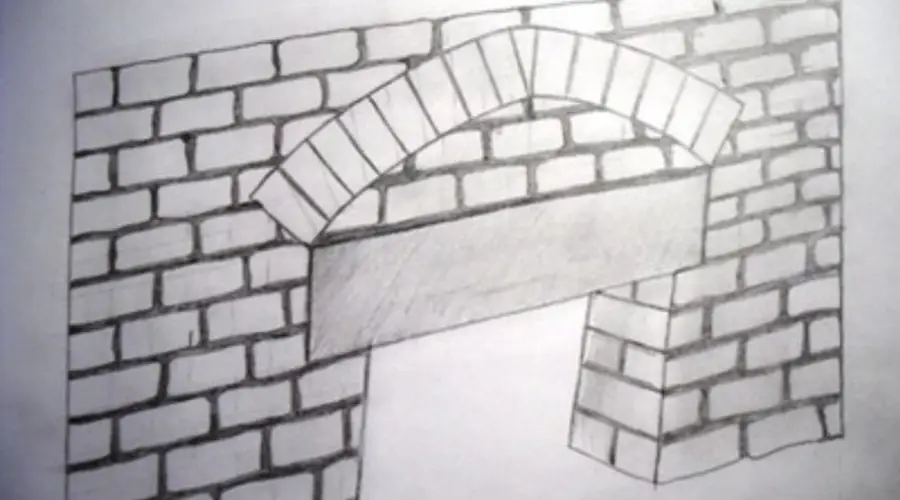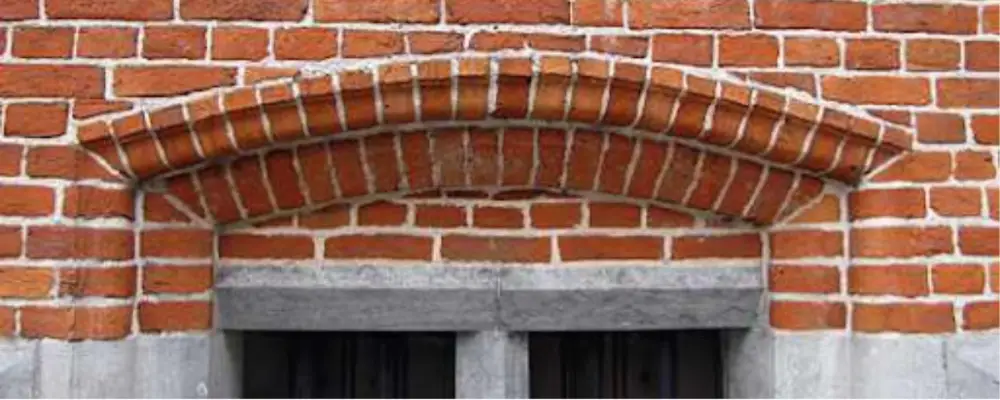Arches are the cornerstone of many architectural designs. Their remarkable structural efficiency and elegant curve make the structure an iconic landmark in the entire city. With the expert’s guidance, you can evenly carry the weight or load safely to the foundation and ensure unparalleled strength and durability of the structure.
However, the fundamental factor is ensuring the style and functional needs of arches fit your architecture. There are several types of arch styles available; you need to conduct deep research and choose the right one. In this article, we’re about to discuss the relieving arch, its features, and its applications.
Overview of Relieving Arch
A relieving arch is an architectural element known for alleviating stress on a structural component, particularly on a lintel or beam. This arch is designed to transfer the heavy weight or load of the wall to the adjacent walls. It prevents excess stress on the underlying structure, reducing the risk of cracking and damage. This arch type is also known as a discharging arch, commonly used in historic buildings to distribute weight evenly or reinforce weak points.
Features of Relieving Arch
Here are the features that you can find at a relieving arch:
Arch Shape: A relieving arch can be easily identified with its distinctive curved shape. It is primarily recognised for efficiently transferring the load and weight to its support and reducing the risk of failure.

Structural Support: While transferring the weight evenly to the structure, the overall stress on the underlying component is typically reduced. It not only improves the structural support but also eliminates the risk of failure and damage.
Material: A relieving arch can be constructed using various materials such as concrete, stone, or brick. The choice of material is based on the architectural style and specific application needs.
Position: The relieving arch is generally positioned above the beams, lintels, and other load-bearing elements. It provides maximum support to carry the weight of the wall and ensures structural integrity.
Advantages and Disadvantages of Relieving Arch
Advantages
Let’s discuss some of the significant advantages of constructing a relieving arch:
Weight Distribution: It is always good to transfer the weight evenly to the adjacent walls, which helps reduce the stress on the underlying structure and promotes its longevity.
Structural Reinforcement: Unlike other forms of arches, relieving arches significantly improve the load-bearing capacity of the lintels and walls. It typically prevents structural failures and cracks in the foundation.
Historical Significance: The shape and outlook of the relieving arch fit perfectly with traditional architectural styles. While using it in construction, you can improve the historical and cultural value of a building.
Aesthetic Value: Similar to strength and durability, the aesthetic elegance of a structure never fades from the building value. This arch type can be used as a decorative element to improve its visual appearance and architectural character.
Disadvantages
Understanding its negative impacts can help you adjust construction planning accordingly. Here are some of these:
Complexity in Designing: Relieving arch is primarily known for its structural integrity and aesthetic value. However, this construction process involves various complexities when compared to other reinforcement methods. It might require extra time, cost, and skilled labours to deal with the challenges.
Visual Impact: Of course, a relieving arch makes the construction visually striking. But the building may lose its original feature and appearance, particularly when it is not harmoniously integrated with the existing design.
Cost: Relieving arch construction is a time-consuming process and increases the overall construction cost. Unlike other structural methods, it demands large materials and specialised labour to achieve the desired style and finishing.
Maintenance: This arch style often requires repair and maintenance to ensure the long-lasting aesthetic appeal and structural integrity. Beyond its higher cost, you need to pay close attention to any minor damage and repair it without delay.
Applications of Relieving Arch
Here are some common applications of relieving arch in the construction sector:
To reduce the excess stress on structures and prevent the risk of failure and cracking, a relieving arch is recommended to be placed above beams or lintels.
Relieving arches are key to reinforcing weak points in walls, especially in the areas above windows or doorways that exist in older structures.
It is often used as a decorative element to create visual interest on the building’s façade.
It can be found in historic buildings to preserve the original architectural character and appearance of existing structures.
Step-by-Step Construction Process of Relieving Arch
- Determine the size, shape, and position of the relieving arch based on architectural design and structural requirements.
- Choose appropriate material to ensure the construction’s strength, aesthetic, and durability.
- Centering is essential to support the arch, which should replicate exactly the curve of the arch.
- Start laying the bricks or stone by ensuring they are aligned and leveled properly. Each course of laying should be slightly smaller than the one below to achieve the perfect size and shape.
- To strengthen the bonding and stability, use mortar between the stones or bricks.
- Once the applied mortar is cured sufficiently, the centering can be removed. This removal needs careful attention to avoid damage.
- Finishing work involves painting or plastering to complete the arch and improve the overall building design.
Final Thoughts
Incorporating a relieving arch design into the construction enhances the aesthetic value and structural integrity. Notably, it efficiently transfers the load and weight to the adjacent wall and reduces the stress of the overall structure. In this article, you have gained insight into its key features, advantages, and applications.
FAQs
Yes, a relieving arch can also be an excellent choice for modern buildings. However, this is often used in historical preservation projects to add a sense of architectural touch.
Relieving arch evenly distributes the weight from the lintel or beam to the surrounding architecture. This process involves reducing the overall stress and load on the underlying component, preventing the structure from the risk of cracking and damage.
Yes, relieving arches can also be used in tunnels, especially to:
1. Distribute load
2. Prevent cracking
3. Enhance structural integrity.

